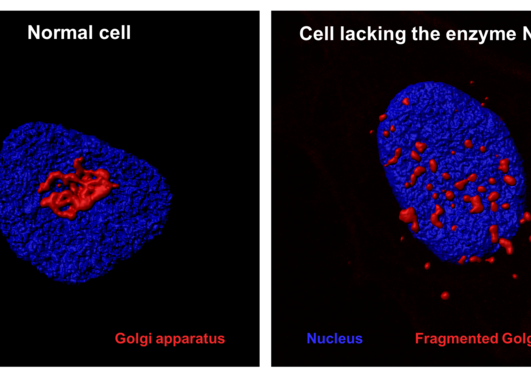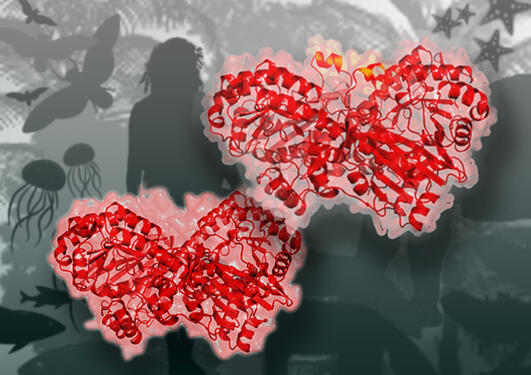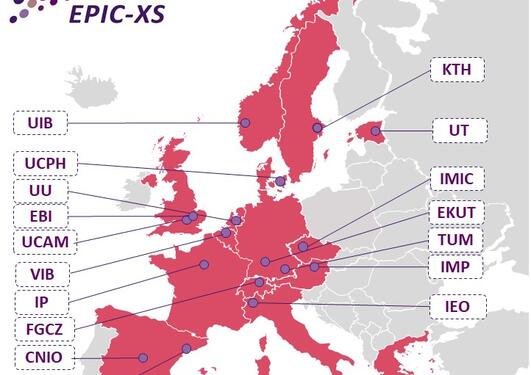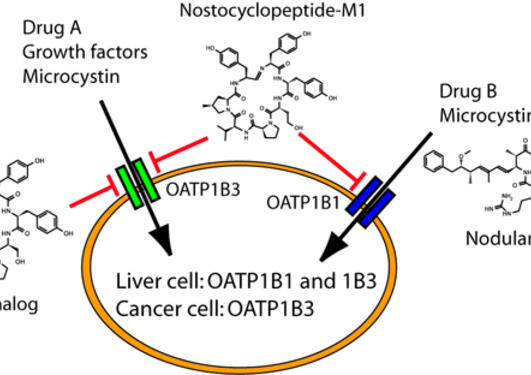News archive for Translational Cell Signaling and Metabolism
On Thursday 12th of March, the University of Bergen was shut down on short notice. Employees and students left their study and workplaces, worried about the recently declared pandemic situation and how the next weeks and months would be like.
Have you ever considered doing a research stay abroad to broaden your scientific horizon? Postdoctor Sylvia Varland recently returned from a 2-year research stay at University of Toronto. Learn more about her scientific adventure and cultural experiences.
During his Erasmus internship in the Arnesen lab, Tobias B. Beigl took great interest in his project on the recently identified NAA80 enzyme. Beigl was on an interesting and important research track and stayed on for a Master’s project trying to figure out why cells lacking NAA80 typically had a more fragmented Golgi apparatus. He recently published his findings in the scientific journal... Read more
In human cells, N-terminal acetylation is among the most common protein modifications. Now, researchers at the University of Pennsylvania and the University of Bergen have revealed the structural and biochemical properties of the major molecular machine involved in this process. Cancer cells require this enzyme for survival and proliferation.
Mathematical modeling and systems biology explain the evolutionary transition from a four-step to a two-step pathway for the synthesis of NAD from vitamin B3.
N-terminal acetylation is a very common protein modification and NAA10 is the major responsible enzyme in human cells. Here we found a novel pathological NAA10 variant, NAA10 p. (R83H), in two boys with developmental delay and intellectual disabilities.
Two PNAS articles from the Arnesen lab are elected as the best publication of the year 2018 at the Faculty of Medicine. The prize will be awarded at the Faculty Day on 13 June 2019.
As the first lab in Norway, the NAT lab recently installed a HoloMonitor system for 3D live cell microscopy. This novel instrument allows us to spy on the cells in a gentle and non-invasive way.
Adrian Drazic, post doctor at the Department of Biomedicine, is one of the recipients of this years award for outstanding young researchers by the Meltzer Foundation.
Monica Hellesviks winning poster “NAA80 knockout cells: Fast and Furious?” scores with elegant simplicity and effective communication of scientific results.
Thomas Arnesen and Harald Barsnes from the Department of Biomedicine are part of a new european consortium in the field of mass spectrometry based proteomics research. The European Union has awarded 10 million Euro.
Cinderella is a tale of being lifted from obscurity to recognition and significance. A review by young researchers at the Department of Biomedicine highlights the importance of the post-translational modifications of actin.
Read a summary of how researchers from UiB investigate new genetic variants associated with intellectual disability, autism spectrum disorder, and congenital abnomalies.
Researchers at the University of Florence had been looking for an new anti-cancer drug, when they realized the old rat poison called Vacor could be the answer to their searches
These researchers have made a sensational finding in cell biology. Adrian Drazic, Henriette Aksnes and Michaël Marie from Thomas Arnesen's group found an enzyme that others have been looking for for 30 years.
Researchers in TSG have, together with collaborators in Helsinki, identified a novel class of cyclic lipopeptides, named Anabaenolysin after the producing cyanobacterium, Anabaena. The lipopeptides have two glycines, two unusual amino acids, where one contains and a long unsaturated fatty acid chain. Their structures enable them to penetrate into membranes, but preferably membranes containing... Read more
Recently, researchers in TSG found that Ncp-M1 blocks the liver-specific transporter proteins OATP1B1/OATP1B3. These transporters are responsible for hepatocellular uptake of growth-stimulating steroids, several drugs, and toxins like microcystin, and are an important part of the detoxification machinery of the liver. Ncp-M1 is non-toxic to both liver cells and other cell types, and its mechanism... Read more
Pages
- December 2020 (1)
- September 2020 (1)
- May 2020 (1)
- March 2020 (1)
- February 2020 (1)
- August 2019 (1)
- June 2019 (2)
- May 2019 (1)
- March 2019 (1)
- February 2019 (1)
- January 2019 (2)
- March 2018 (3)
- August 2012 (1)
- February 2011 (1)
- October 2010 (1)
- November 2009 (1)
- April 2009 (2)

















